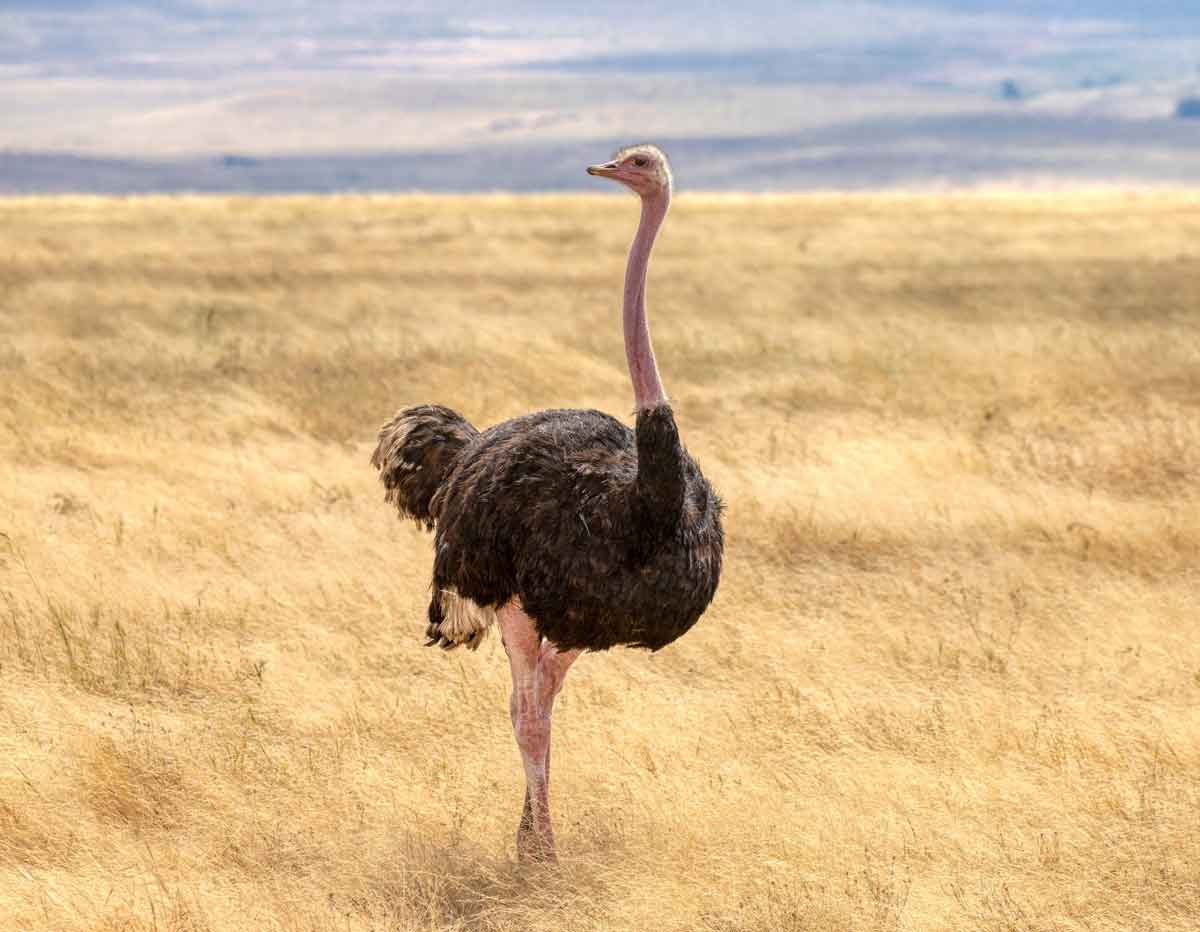The Ngorongoro Crater, often referred to as the “Eighth Wonder of the World,” is a geological marvel and a renowned UNESCO World Heritage Site located in northern Tanzania. Formed by the collapse of a massive volcano approximately two to three million years ago, the crater floor spans over 260 square kilometers, making it one of the largest intact volcanic calderas in the world. The rim of the crater reaches an elevation of about 2,400 meters (7,900 feet) above sea level, offering breathtaking panoramic views of the surrounding landscapes.
Inside the Ngorongoro Crater, a diverse and self-contained ecosystem thrives, encompassing open grasslands, dense forests, and a large soda lake known as Lake Magadi. This natural haven provides a home to a remarkable concentration of wildlife, including the “Big Five” (lion, elephant, buffalo, leopard, and rhinoceros), as well as a myriad of other species such as zebras, wildebeest, hippos, and various bird species. The conservation area is also a crucial habitat for endangered black rhinoceros. Visitors to the Ngorongoro Crater can embark on game drives to witness the abundance of wildlife against the backdrop of the crater’s stunning scenery, creating an unforgettable safari experience in this ecological wonder.
Fly to Tanzania:
Most international visitors arrive at either Kilimanjaro International Airport (JRO) or Julius Nyerere International Airport (DAR) in Tanzania.
Travel to Arusha:
If you land at Kilimanjaro International Airport, it’s a short distance to Arusha, a common starting point for safaris to Ngorongoro Crater.
Vehicle:
Using vehicles which are often 4x4s, suitable for the varied terrain you may encounter on the journey and within the conservation area.
Choose the Route:
Ngorongoro Crater is part of the Ngorongoro Conservation Area, and there are multiple entry gates. Work with your driver-guide to select the most suitable route based on your preferences, itinerary, and road conditions.
Drive to the Crater Rim:
The road from Arusha to Ngorongoro Crater takes you through the conservation area. It’s a scenic drive, and you’ll likely encounter wildlife along the way.

Equus quagga

Connochaetes

Crocuta crocuta


Panthera leo

Phoenicopterus

Hippopotamus amphibius

Loxodonta

Acinonyx jubatus

Bubalus bubalis
Popular experience in the Ngorongoro crater
A dry season visit to Ngorongoro Crater, from June to October, promises an exceptional safari experience with its unique advantages. The scarcity of water sources concentrates wildlife around remaining watering holes, providing unparalleled opportunities for observing the “Big Five” and other iconic species in close proximity. The clear skies and cooler temperatures enhance visibility, making the crater’s expansive landscapes and diverse ecosystems easily accessible. This season is ideal for photography enthusiasts, as the reduced vegetation and optimal lighting conditions capture the striking beauty of the crater. Cultural visits to Maasai villages and the possibility of witnessing the calving season further enrich the safari, creating an unforgettable exploration of Ngorongoro’s wildlife and cultural wonders.
A visit to Ngorongoro Crater during the heavy rain season, typically from November to April, transforms this ecological wonder into a lush and vibrant landscape. The rains rejuvenate the surroundings, leading to flourishing greenery and colorful wildflowers. While road conditions may present challenges, the rewards include fewer tourists, creating a more intimate safari experience. The heavy rain season is also a time of increased bird activity, with migratory species joining the local residents. Witnessing the calving season adds a heartwarming dimension, as baby animals abound. Despite occasional showers, the heavy rain season unveils Ngorongoro Crater’s biodiversity in a unique and enchanting manner, offering a refreshing perspective on this natural marvel.
Exploring Ngorongoro Crater during the short rain season, typically occurring from November to December, reveals a transient yet enchanting side of this ecological masterpiece. The brief showers bring a refreshing touch to the landscape, transforming the crater into a lush green haven adorned with blooming vegetation. While the rains are relatively light, they breathe life into the surroundings, creating a picturesque setting for wildlife enthusiasts. The short rain season offers a quieter and more serene safari experience, with the added allure of observing baby animals born during this time. Despite the occasional showers, this season showcases Ngorongoro Crater’s biodiversity in a tranquil and verdant ambiance, providing a unique and captivating perspective for those seeking a quieter safari adventure.
JAN
FEB
MAR
APR
MAY
JUN
JUL
AUG
SEP
OCT
NOV
DEC
Good
Best
Mixed









Popular experience in Ngorongoro Crater









P.O Box 2112,
Arusha, Tanzania
T. +255 767 874 733
+255 764 874743
E. info@jackaladventures.com